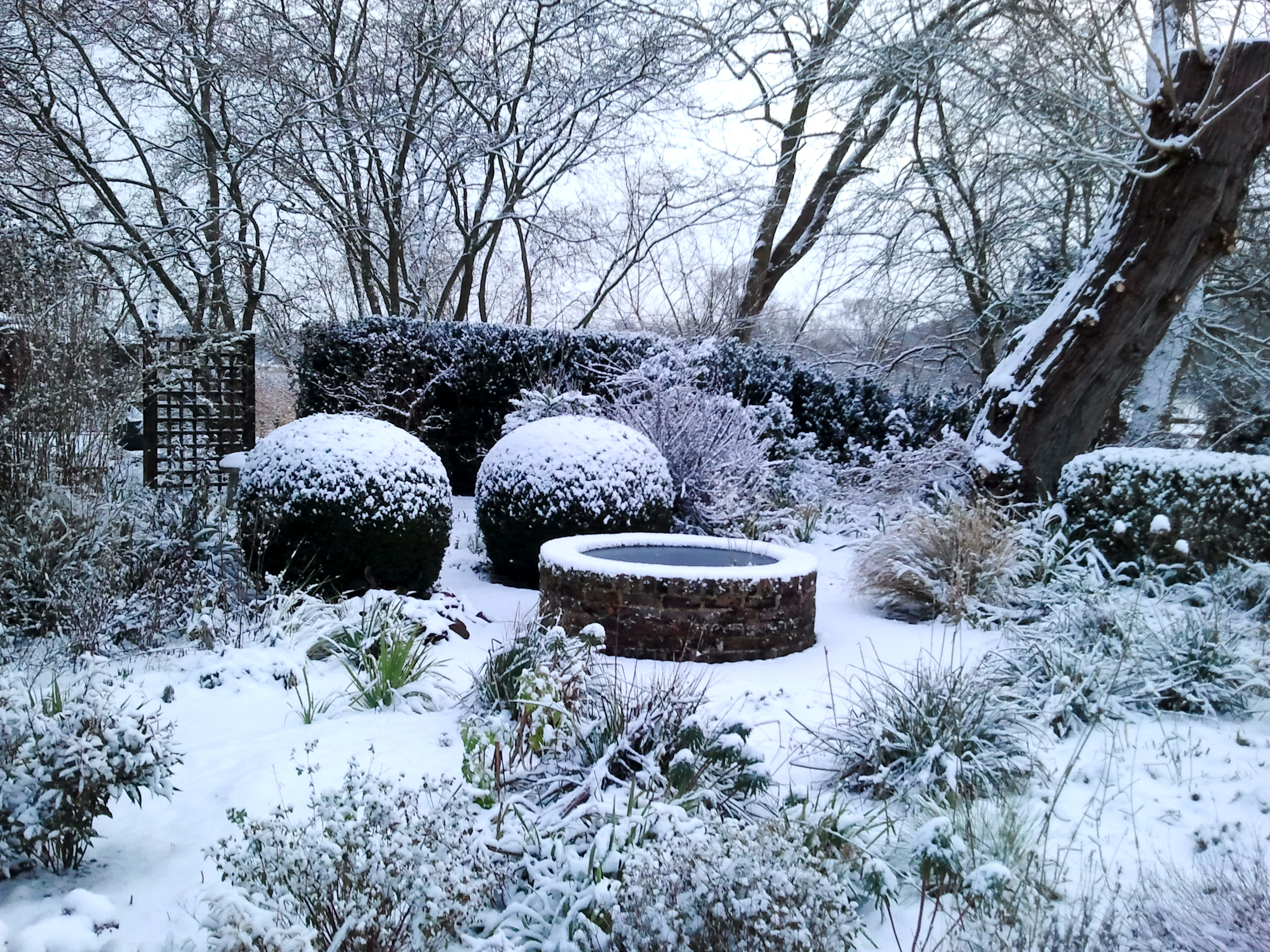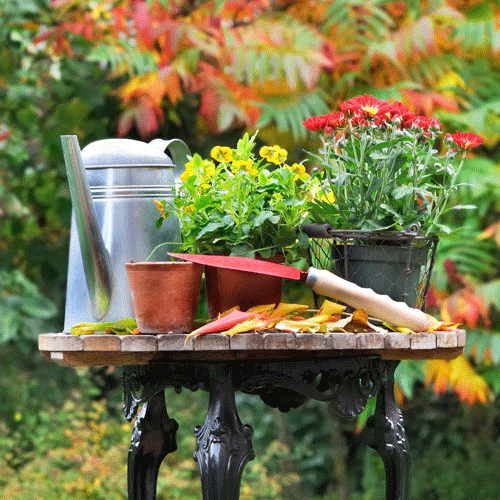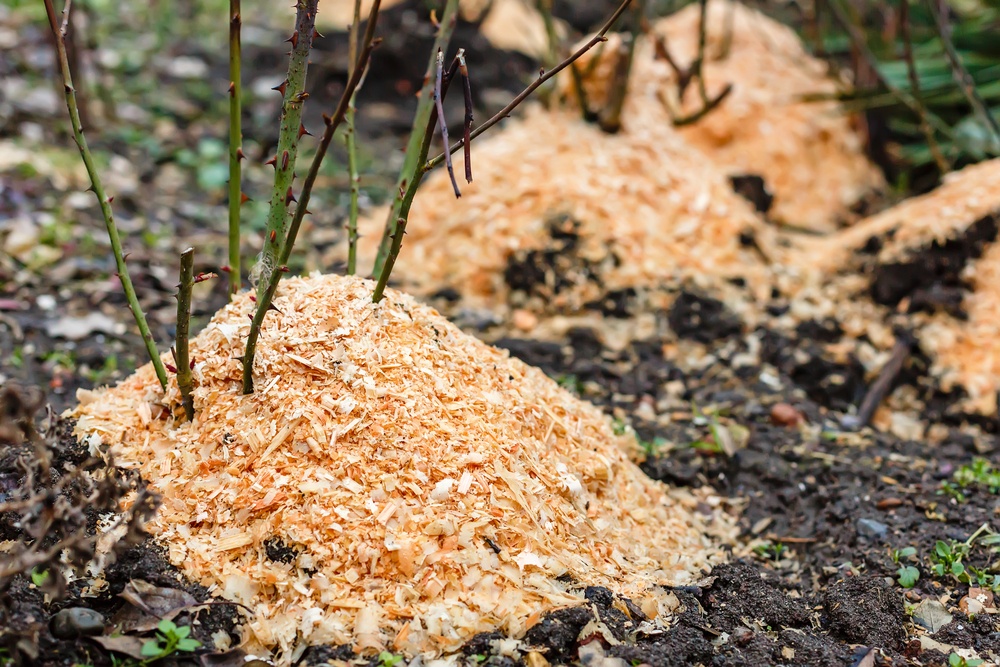Winter will be here before you know it, and the cold weather can sink into your garden’s “bones” just as much as it sinks into yours. If your garden isn’t ready for winter’s chill, you will see the consequences next spring in the form of unhealthy plants with puny blooms or no blooms at all, or even plants that don’t make it through the cold weather. Take these steps to prepare your garden to weather the winter months, and enjoy a healthy garden next spring!

September to do list:
- Add compost or manure to garden beds.
- Cover water features with netting to collect falling leaves.
- Check houseplants for pests, then start to move indoors.
- IF Planting new trees and shrubs, give them at least six weeks before frost.
- Plant spring flowering bulbs.
- Clean bird feeders, gardening tools.
- Continue watering trees and shrubs until the ground freezes.
- Bring in any clay pots.
- Pull weeds before they go to seed to reduce the number of weeds next year.
- Fertilize your lawn.

Prepare your soil for spring
Despite the fact that most people reserve this activity for the spring, fall is a great time to dig in soil amendments like manure, compost, bone meal, kelp, and rock phosphate. In most climates, adding nutrients at this time of year means the additions have time to start breaking down, enriching your soil, and becoming biologically active. It also means you won’t have to wait until your garden dries out in the spring to work the soil for the first time. Amending, turning, or digging soil now means you’ll have already done some of the work when the busy season hits. Similarly, a fall tilling (if you till your soil in the first place) helps improve drainage before extreme weather becomes a reality.
Once you’ve added any amendments in fall, you can cover the bed with sheet plastic or other covering to prevent winter rains from washing the amendments below the active root zone; this applies especially to raised beds since they drain more readily than in-ground beds. Remove the sheeting in early spring and till lightly with a hoe in advance of spring planting.


Bring Tender Plants Indoors
Depending on where you live, some plants may behave as either annuals or perennials that simply can’t handle even a light frost. Many people don’t bother trying to extend the life of plants generally not meant to last more than a year and let them die back after a freeze hits. However, if you grow tender annuals and perennials in pots and want to save them, move the pots into the garage or house when frost threatens and take them back out when the weather warms a bit, at least for a week or two. This process allows the plant acclimate better to a drastic change in growing conditions.
Trim and Cut Back
The first step to prepare your garden for winter is to cut back certain plants. There is more than one reason for this: some plants, such as bamboo and some ornamental grasses, die out over the winter and look unattractive in the spring. The dead growth can also cause crowding when the new growth is ready to come in next spring. Other plants, such as garlic and some bulb-type perennial flowers, can be more vulnerable to disease if you leave the dead growth behind. Trimming the dead growth away now eliminates that extra environment for bacteria and fungi that are harmful to your perennials to grow and threaten the plant. Most perennial flowers do best if you trim them to about an inch or two above the ground after they have died out, and discard the dead material.

Protecting your lawn
Wrap tree trunks to avoid frost cracking. This prevents damage to thin-barked species in winter when sun-warmed sap quickly freezes at nightfall and causes bark to split. Use paper tree wrap, starting an inch below soil level and up to the lowest branches. Adhere with duct tape. Remove in spring to allow new growth.
Protect plants from pests. Surround valuable shrubs and trees with wire-mesh screening (called hardware cloth) to prevent animal browsing on foliage.
Preserve moisture. Evergreens are most susceptible to drying out in winter. Make sure plants are well watered going into winter. Consider spraying with an antidesiccant or wrapping plants with a double layer of burlap.
Protect rosebushes. While some of the newer shrub roses don’t require winter protection, older hybrid teas and floribundas may. Where winters are cold, use rose cones or make a cylinder of your own and fill with chopped leaves for the winter. Remove in early spring.
Add mulch. Wait until after a hard freeze, then add a protective layer of mulch to your beds (woodchips or shredded leaves, for instance). This will keep the soil at a more even temperature and help prevent soil heaving from forcing plants out of the ground.
Water well. Don’t stress plants needlessly. If you have a dry fall, you may need to water plants even after they start to go dormant. Make sure they are braced for winter in cold climates by watering until the ground freezes.
